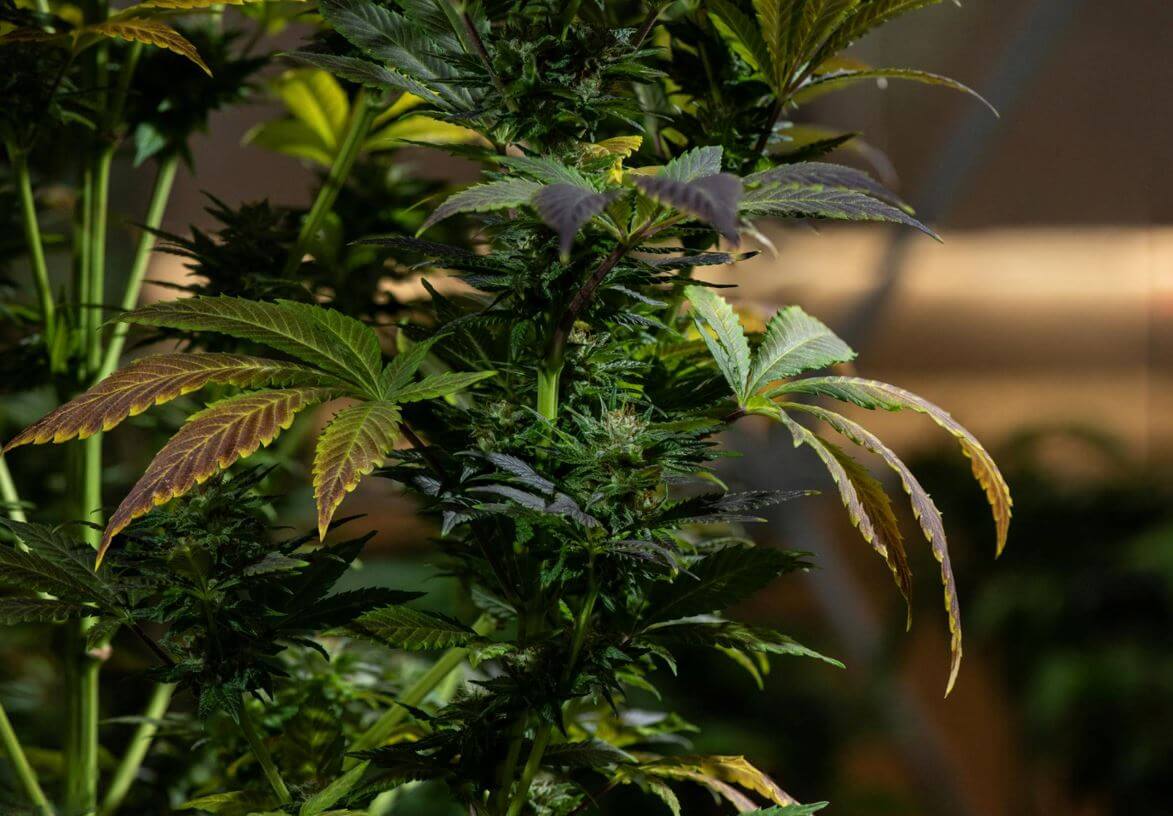Latest Blog Posts
Top rated

What Are Cannabis Terpenes and What Do They Do?
When it comes to cannabis, a few familiar terms tend to come up, such as marijuana, cannabinoid, and Sativa. However, another less frequently used term is Terpenes.
Terpenes are an aromatic compound found in cannabis. They determine the scent of various flowers and herbs, and cannabis is no exception. Terpenes are responsible for giving cannabis its unique aroma and also impacting its flavor.
Cannabis comprises more than one hundred and fifty different terpenes, primarily found in traces. It is the notable ones that provide cannabis with its trademark scent. In addition, terpenes also produce a variety of therapeutic and mood-changing effects in cannabis users.
Origin of Terpenes
Terpenes are naturally occurring compounds located in the trichomes of female cannabis plants. Trichomes are glands that can be found on the surface of buds, leaves, and stems. They contain a resin gland that creates terpenes.
Besides contributing to the sharp scent of cannabis, terpenes play a vital role in the plant's growth. These organic compounds influence the color and pigmentation of cannabis buds and leaves.
There are specific terpenes like geraniol that serve as insect and herbivore repellants. Certain animals may be keen to consume the cannabis plant, but geraniol helps fend them off.
Terpinolene and linalool, other examples of terpenes, have the opposite effect of attracting insects that can disseminate pollen on the cannabis plant. Both terpenes strengthen the plant's immune system and safeguard it from pathogens and stressors as well.
Some determinants affect the terpenes produced by cannabis plants. For example, whether a plant is indoor or outdoor directly correlates with the level of terpenes created. Other factors include exposure to light and temperature, nutrient levels, and the plants’ season.
A large number of terpenes cannot be extracted effectively from cannabis, given their volatile nature. However, a change in extraction methods means that these terpenes can be salvaged and used for therapeutic benefits.
Terpenes versus Cannabinoids
Terpenes should not be confused with cannabinoids, which is another regularly occurring term about cannabis. Cannabinoids are chemical compounds that control the receptors in the body's endocannabinoid system. In other words, cannabinoids are what induce a high in cannabis users.
Types of Terpenes
Although there are tens of thousands of terpenes worldwide, approximately only two hundred have been found in cannabis. Generally, there are a dozen or so terpenes that are assessed to determine the traits of a cannabis strain.
Some of the most common ones include limonene, which can be traced in lemon peels. Limonene is known to reduce anxiety and combats acne bacteria. Another prominent terpene is called linalool, which we discussed earlier. It is found in lavender and studied because it can assuage the pain.
Other examples of terpenes are alpha-pinene, which can be extracted from pine trees and is an effective anti-inflammatory. Beta-myrcene is yet another terpene found in hops and relaxes the muscles and is an excellent sedative.
Last but not least, there is beta-caryophyllene, which is found in cinnamon and black pepper. It has antimalarial propensities and also helps in shielding stomach cells.
The Impact of Terpenes
It is imperative to comprehend the effect that the consumption of terpenes has on a cannabis user.
Terpenes have been utilized to create essential oils and for aromatherapy since time immemorial. For instance, as we mentioned earlier, lavender oil consists of linalool, which can be applied to the back of the ears and allows a person to unwind.
Similarly, Bubba Kush, a stress-relieving strain of cannabis, contains caryophyllene, limonene, and myrcene, all of which help lower anxiety. However, terpenes have numerous other effects that exceed stress relief. Although there was considerable focus on THC (Tetrahydrocannabinol) and CBD (Cannabidiol) and their benefits, scientists have studied terpenes and determined that it has medicinal uses.
All terpenes are comprised of therapeutic traits. Many of these are not different with their degree of influence when consumed through cannabis. This brings us to the next topic of discussion: the various benefits of terpenes.
The Advantages of Terpenes
Numerous studies have been conducted on an introductory level on test subjects like animals and in test tubes to gauge the therapeutic impact of terpenes. Researchers concluded that terpenes had several positive effects, some of which are discussed in more detail below.
Anticancer
Research has indicated that terpenes can help quell cancer. Certain terpenes found in cannabis have anticancer characteristics since they suppress the growth of cancer cells.
In particular, limonene is an anticancer and antitumor agent. Likewise, camphor, beta-myrcene, pinene, and terpinene have similar effects. None of these terpenes have side effects, nor do they impact healthy cells.
Antiviral
Terpenes also exhibit antiviral propensities. Significant studies have identified antiviral compounds and terpenes that can successfully tackle viruses. Carvone, camphor, caryophyllene, beta-pinene, and alpha-pinene have shown signs of combating viruses.
Antimicrobial
Yet another advantage of using terpenes is that they fight microbes. They are antimicrobial and can intercept detrimental microorganisms as soon as they appear.
The best terpenes to counter or completely eradicate microbes are geraniol, menthol, terpinolene, eucalyptol, and alpha-bisabolol.
Pain Management
One of the essential benefits of terpenes is that they help assuage pain effectively. Examinations of terpenes have shown that they imitate cannabinoids and establish an analgesic effect. In simpler terms, they lower pain.
One recent study has shown that if terpenes are blended with cannabinoids, their pain-alleviating effects are enhanced without any side effects. This mixture could point to the entourage effect.
Terpenes that are particularly useful in pain relief are humulene, beta-pinene, linalool, and geraniol. They can activate the body's CB1 receptors, part of the endocannabinoid system, and impact pain.
Antidepressant
Terpenes can also serve as antidepressants. Since they can change a person's mood, they act as antidepressants. A fourth of all antidepressant drugs are manufactured using herbal extracts that consist of terpenes!
The most effective terpenes that provide relief from depression include linalool and beta-pinene. They can be found in plant extracts used in various antidepressant medicines.
Terpenes in Cannabis
Now that we've firmly established what terpenes are, where they come from, and what purpose they serve, we must look at the terpenes that are commonly found in cannabis.
Limonene
First and foremost, limonene has a fresh and vibrant scent. Naturally, it is found in the rinds of citrus fruits and ginger. Terpenes traces in several cannabis cultivars also have a similarly fruity bouquet, such as black cherry soda and papaya punch.
Limonene is a viable stress reliever and has also been known to augment focus and improve users' moods. Scientifically speaking, limonene influences immune cells in the body, which shield the body against many disorders.
Research has shown that limonene can also increase antibody-producing cells in the bone marrow and spleen, which help neutralize pathogenic viruses and bacteria.
Caryophyllene
Caryophyllene, also called beta-caryophyllene, gives cannabis a spicy and pepper-like bite. Its traces can also be seen in other plants like black pepper, oregano, cloves, and rosemary.
Caryophyllene lends a relaxing effect when consumed and also helps alleviate anxiety. Caryophyllene is distinguishable from other cannabis-oriented terpenes because it is the only one that binds itself to the CB2 receptor in the endocannabinoid system. This is why caryophyllene is categorized as an atypical cannabinoid.
Early research has shown that caryophyllene may even suppress symptoms of diabetes, liver fibrosis, colitis, cerebral ischemia, and other significant illnesses. Therefore, caryophyllene is an important terpene.
Myrcene
Last but not least, there is myrcene. It is found in lemongrass and hops, and its scent is musky and earthy. In terms of flavor, myrcene gives cannabis a sweetness akin to that of mangoes.
Myrcene is an extraordinary relaxant. If cannabis users have more than a 0.5% concentration of myrcene, they will feel compelled to relax. Any concentration less than 0.5% is likely to give users a considerable high. Furthermore, myrcene also has anti-inflammatory tendencies, which was determined after a study in which myrcene reduced inflammation caused by osteoarthritis.
The Bottom Line
The topics discussed above clearly show the importance of terpenes. For ages, terpenes have been heralded for their benefits, with much of the plaudits being afforded to cannabinoids and tetrahydrocannabinol. However, there has been a notable shift in recent years. Researchers and users alike are coming to realize that terpenes are an essential aspect of cannabis.
Disclaimer: This material is for informational purposes only and should not be relied on for legal, medical, financial, or any other form of professional advice.















